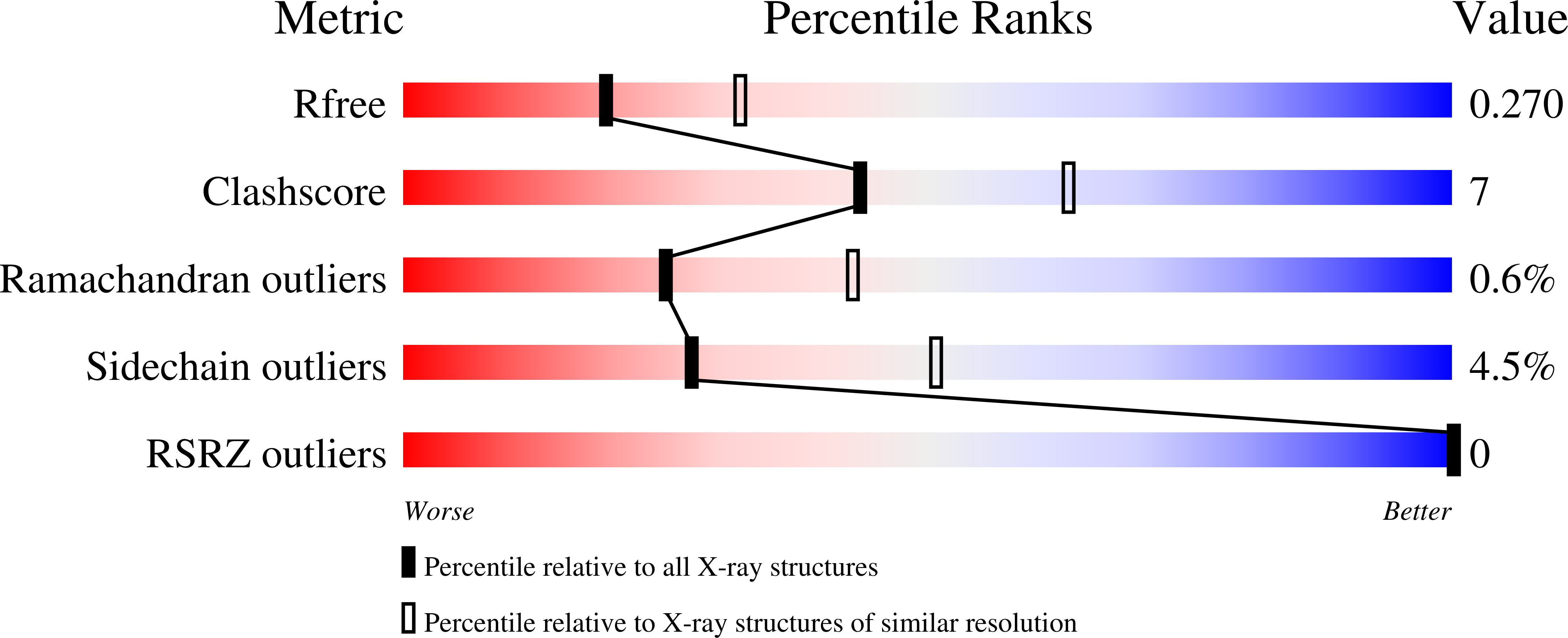Lactone-bound structures of cyclohexanone monooxygenase provide insight into the stereochemistry of catalysis.
Yachnin, B.J., McEvoy, M.B., MacCuish, R.J., Morley, K.L., Lau, P.C., Berghuis, A.M.(2014) ACS Chem Biol 9: 2843-2851
- PubMed: 25265531
- DOI: https://doi.org/10.1021/cb500442e
- Primary Citation of Related Structures:
4RG3, 4RG4 - PubMed Abstract:
The Baeyer-Villiger monooxygenases (BVMOs) are microbial enzymes that catalyze the synthetically useful Baeyer-Villiger oxidation reaction. The available BVMO crystal structures all lack a substrate or product bound in a position that would determine the substrate specificity and stereospecificity of the enzyme. Here, we report two crystal structures of cyclohexanone monooxygenase (CHMO) with its product, ¦Å-caprolactone, bound: the CHMO(Tight) and CHMO(Loose) structures. The CHMO(Tight) structure represents the enzyme state in which substrate acceptance and stereospecificity is determined, providing a foundation for engineering BVMOs with altered substrate spectra and/or stereospecificity. The CHMO(Loose) structure is the first structure where the product is solvent accessible. This structure represents the enzyme state upon binding and release of the substrate and product. In addition, the role of the invariant Arg329 in chaperoning the substrate/product during the catalytic cycle is highlighted. Overall, these data provide a structural framework for the engineering of BVMOs with altered substrate spectra and/or stereospecificity.
Organizational Affiliation:
Departments of ?Biochemistry and ?Microbiology & Immunology, McGill University , 3649 Promenade Sir William Osler, Bellini Pavilion, Room 466, Montreal, Quebec, Canada H3G 0B1.


















